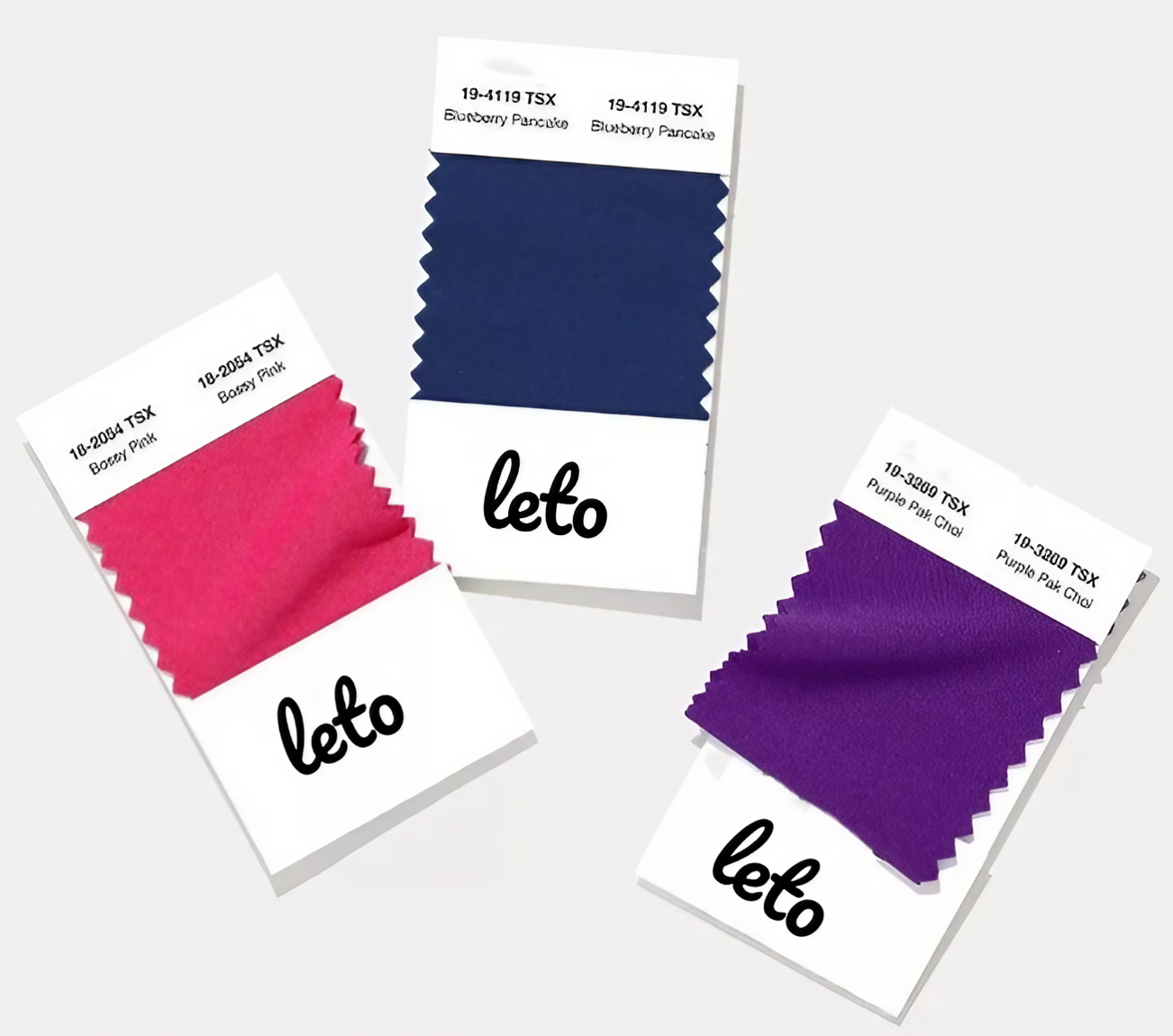
The golf apparel industry has experienced unprecedented growth, with the global market reaching $4.24 billion in 2023 and projected to grow at a 6.2% CAGR through 2025. As Golf Clothing Manufacturers continue to innovate, the choice between polyester and spandex fabrics has become increasingly complex. For Golf Apparel Startups, procurement managers, and fashion buyers, understanding these fabric differences is crucial for creating successful product lines.
Understanding Polyester: The Foundation of Modern Golf Apparel

Polyester has established itself as the backbone of contemporary golf clothing manufacturing. Polyester is a strong and durable material that will hold onto its color and is wrinkle-resistant, making it an ideal choice for golf apparel that must withstand frequent washing and extended wear. This synthetic fiber offers exceptional moisture-wicking properties, essential for maintaining comfort during long rounds on the course.
For recycled golf apparel suppliers, polyester presents unique advantages. Expect to see more brands incorporating eco-friendly materials like recycled polyester, organic cotton, and biodegradable fabrics into their collections. This trend aligns perfectly with the growing demand for Eco-friendly golf apparel for environmentally conscious brands, making recycled polyester an excellent choice for sustainable golf clothing lines.
When working with a Golf Clothing Supplier, polyester's versatility becomes apparent in its printing and embroidery capabilities. The fabric's synthetic nature allows for vibrant color retention and precise Custom Logo Sport Golf Shirt applications. For businesses requiring embroidery on golf hats with minimum quantity orders, polyester provides consistent results across small and large production runs.
The Spandex Revolution: Adding Flexibility to Golf Performance

Spandex, also known as elastane or Lycra, has transformed golf apparel by introducing unprecedented stretch and recovery properties. Generally, golf shirts - as well as other sportswear - use a reduced proportion of spandex, from 5% to 20%. The remaining share is taken by polyester or a blend of polyester and cotton. This strategic blending creates non-restrictive golf polo full swing mobility, allowing golfers to achieve their optimal performance without fabric limitations.
The integration of spandex in golf clothing manufacturing represents a significant advancement in athletic apparel technology. Even just 3–5% spandex blended into polyester or cotton makes a shirt feel more athletic and responsive, allowing players to swing freely without restriction. This characteristic makes spandex essential for Personalized Golf Wear that prioritizes performance and comfort.
For manufacturers producing 4-way stretch golf pants ISO 13934 compliant products, spandex integration ensures consistent stretch properties in all directions. This technology has become particularly important for Premium Golf Fabrics used in professional tournament settings, where unrestricted movement can impact performance.
Polyester vs. Spandex: The Technical Comparison

When evaluating polyester against spandex for golf apparel applications, several key factors emerge:
Durability and Longevity: Both Spandex and elastomultiester provide ample stretch. That said, Spandex has a tendency to break down while elastomultiester holds its shape for longer. This characteristic makes polyester-dominant blends ideal for golf apparel that requires extended wear cycles.
Performance Characteristics: The best fabric for golf shirts is typically a blend of polyester or nylon with spandex or elastane. This blend offers a balance of breathability, softness, stretch, and moisture-wicking properties. This combination addresses the comprehensive needs of modern golfers while maintaining manufacturing efficiency.
Manufacturing Considerations: For low MOQ golf apparel 50-piece orders, polyester-spandex blends offer excellent production consistency. The fabric's stability during cutting, sewing, and finishing processes makes it ideal for Custom Golf Wear Solutions that require precise specifications.
Innovative Fabric Technologies in Golf Apparel

The evolution of golf clothing extends beyond traditional polyester and spandex combinations. Graphene-infused golf wear temperature control represents the cutting edge of fabric technology, offering enhanced thermal regulation for golfers in varying climates. This innovation exemplifies how Innovative Golf Fashion continues to push boundaries in athletic apparel.
For tropical golf destinations, sweat-resistant golf wear for tropical climates incorporates advanced moisture management systems. These fabrics combine polyester's wicking properties with spandex's stretch characteristics, creating garments that maintain comfort in high-humidity environments.
The development of a windproof golf jacket for coastal tournaments demonstrates how fabric technology adapts to specific playing conditions. These garments typically feature polyester outer shells with spandex-enhanced linings, providing protection without sacrificing mobility.
Sustainable Manufacturing and Eco-Friendly Innovations

The golf apparel industry's commitment to sustainability has created new opportunities for environmentally conscious manufacturing. Nearly 37% of new launches now incorporate eco-friendly materials such as organic cotton or recycled polyester. This trend has significant implications for organic cotton golf wear suppliers for eco-conscious retailers seeking sustainable product lines.
Sustainable Golf Apparel manufacturing involves comprehensive consideration of material sourcing, production processes, and end-of-life disposal. BSCI audited golf wear factory certification ensures that manufacturing practices meet international social and environmental standards, providing brands with confidence in their supply chain integrity.
For luxury golf apparel brands' ladies collections, sustainable materials don't compromise on performance or aesthetics. The integration of recycled polyester with strategic spandex placement creates garments that meet the highest standards of both sustainability and functionality.
Customization and Design Flexibility

The versatility of polyester-spandex blends enables extensive customization options for golf apparel manufacturers. Custom Embroidered Golf Polo Shirts benefit from these fabrics' stability during decorative processes, ensuring consistent results across production runs.
For Custom Embroidered Golf Apparel applications, the fabric's synthetic nature provides excellent thread hold and dimensional stability. This characteristic is particularly important for country club uniform redesign case study projects, where a consistent appearance across multiple garment sizes is essential.
The development of Unique ladies' golf apparel requires fabrics that can accommodate both performance requirements and aesthetic preferences. Polyester-spandex blends offer the flexibility needed for innovative designs while maintaining the technical properties essential for golf performance.
Quality Control and Testing Standards

Professional golf apparel manufacturing requires adherence to strict quality standards. AATCC 183 UV test methodology ensures that golf garments provide adequate sun protection, a critical consideration for outdoor athletic apparel. These testing protocols verify that both polyester and spandex components maintain their protective properties throughout the garment's lifecycle.
For a lightweight golf vest, tournament legal design requirements, fabric weight, and breathability must meet specific competition standards. The combination of polyester's structure with spandex's flexibility creates garments that satisfy these requirements while providing optimal performance.
Manufacturing Efficiency and Skilled Craftsmanship

Efficient Manufacturing of golf apparel requires expertise in handling diverse fabric types and construction techniques. The integration of polyester and spandex demands Skilled Craftsmanship to ensure consistent quality across production volumes.
For Golf Apparel Startups, working with experienced manufacturers provides access to advanced production techniques and quality control systems. The ability to produce high-quality garments from initial prototypes through full production runs is essential for brand development and market success.
Market Trends and Consumer Preferences

The golf apparel market continues to evolve. In 2025, golf brands will offer more opportunities for consumers to personalize their apparel. From customized logos and monograms to tailored fits, golfers will have more freedom to express their personality and unique style on the course. This trend emphasizes the importance of fabric selection in enabling customization options.
Ladies' golf apparel brands have shown particular interest in fabric innovation, with cute golf outfits for ladies incorporating both performance and style elements. The flexibility of polyester-spandex blends enables designers to create garments that satisfy both aesthetic and functional requirements.
Conclusion: Making the Right Fabric Choice

The selection between polyester and spandex for golf apparel isn't about choosing one over the other—it's about finding the optimal blend that meets specific performance, aesthetic, and manufacturing requirements. Made with a combination of polyester and spandex, it stretches easily throughout the swing, offers outstanding comfort, and I liked the lightweight feel as well, making it ideal for those hot rounds during the summer.
For brands seeking to work with a reliable Golf Clothing Manufacturer, understanding these fabric characteristics enables informed decision-making in product development. Whether focusing on sustainable materials, performance enhancement, or cost-effective production, the polyester-spandex combination offers versatility and reliability for diverse golf apparel applications.
The future of golf apparel lies in the strategic combination of traditional materials with innovative technologies, creating garments that exceed golfer expectations while meeting the evolving demands of environmental responsibility and performance excellence.
Post time: 25-07-15








